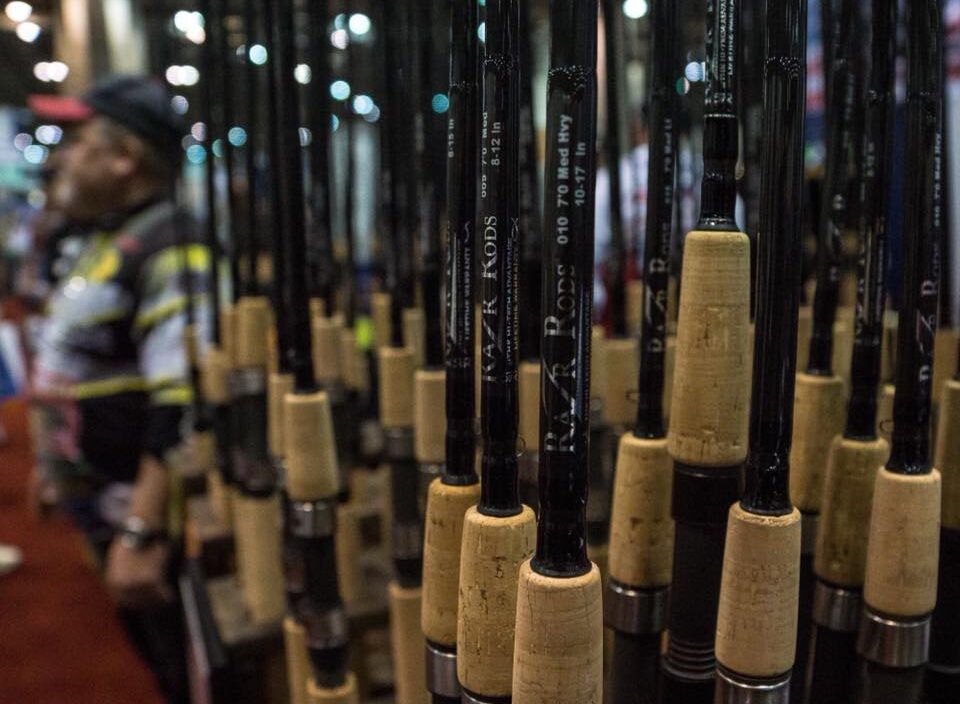Fishing rods have been around for thousands of years and while technological advances have certainly revolutionized the industry and the sport as we know it, the overall concept of the fishing rod really hasn’t changed all that much in that time. Yes, of course today’s best fishing rods are far more intricate and precise than a downed branch or bamboo chute, but at the end of the day, we are still approaching the task exactly as our ancient ancestors did: with a line, a hook, bait, and of course, the rod itself. In this blog we’ll give you a general overview of how fishing rods are made in today’s technologically advanced world.
What are the components of a fishing rod?
Though there are countless proprietary variations between different fishing rod models, any standard fishing rod is going to include the following essential components: a rod blank, a handle, a reel seat, guides, and ferrules (the latter of which are only applicable for two or three-piece rods).
- Rod blank: a blank is the main body of the rod to which all other components are attached.
- Handle: commonly made of plastic, rubber, foam, or cork, the handle is affixed to the butt end of the rod for easy and comfortable gripping.
- Reel seat: this is the connected part of the rod near the handle to which the reel itself is attached. It is generally made from plastic or aluminum.
- Guides: Guides are the loops affixed to the blank through which the line is run.
- Ferrules: on two or three-piece fishing rods, the “ferrules” are the metal sleeves that serve as connection points between each segment.
How are fishing rod blanks made?
Rod blanks are generally made by way of a flat sheet (known as a prepeg) which is wrapped tightly around a tapered centerpiece or “mandrel”. It is imperative that this process is done meticulously and without flaw as the slightest imperfection can affect the performance and the aesthetics of your rod. Once the material is rolled and locked into place, the entire rod is heated which allows the resins to liquefy and cure evenly. Once cured, rods are examined closely for imperfections and sanded down smooth before a finish coat is applied. Quality rods will undergo a rigorous testing process to ensure perfection before they move on to the next step.
How are fishing rods manufactured?
Once a manufacturer has a proper and precise blank, the rest of the process involves affixing the other rod components to the blank itself. For two or three-piece rods, ferrules are added and attached to the appropriate ends with strong adhesive. From there, the handle is attached with epoxy and the guides are set in place and attached by tightening the metal wires which are then reinforced with fine nylon thread.
NOTE: Cheaply manufactured rods are generally mass-produced, prone to flaws, and not built to last; think inexpensive rods you might find at the department store. It’s likely that these rods do not follow EVERY step listed above. While these options are fine for beginners just looking to test the waters of the fishing world, more experienced anglers will want to strongly consider making an investment in the type of precision equipment described above.
Which material is best for a fishing rod?
Fishing rod blanks are generally made from either graphite, fiberglass, bamboo, or carbon fiber. While most experienced anglers will have their allegiance to one material over another, we highly recommend graphite blanks for their unparalleled sensitivity and remarkable strength to weight ratio. Visit our patented material page to learn more about what makes up a signature Razr Rodz blank.
Conclusion
Now we admit, this is a VERY abridged and simplified version of what all goes into making a quality fishing rod. Manufacturers have certainly developed unique tricks of the trade over the years and as technology advances, so sure will the overall rod-building process. Creating the perfect rod requires years of research, experimentation, and process refining. It is a science and an art. At Razr Rodz, our team has dedicated more than a decade into crafting the perfect American-made fishing rod. For more about Razr Rodz’ line of signature American made fishing rods, visit our shop page.

